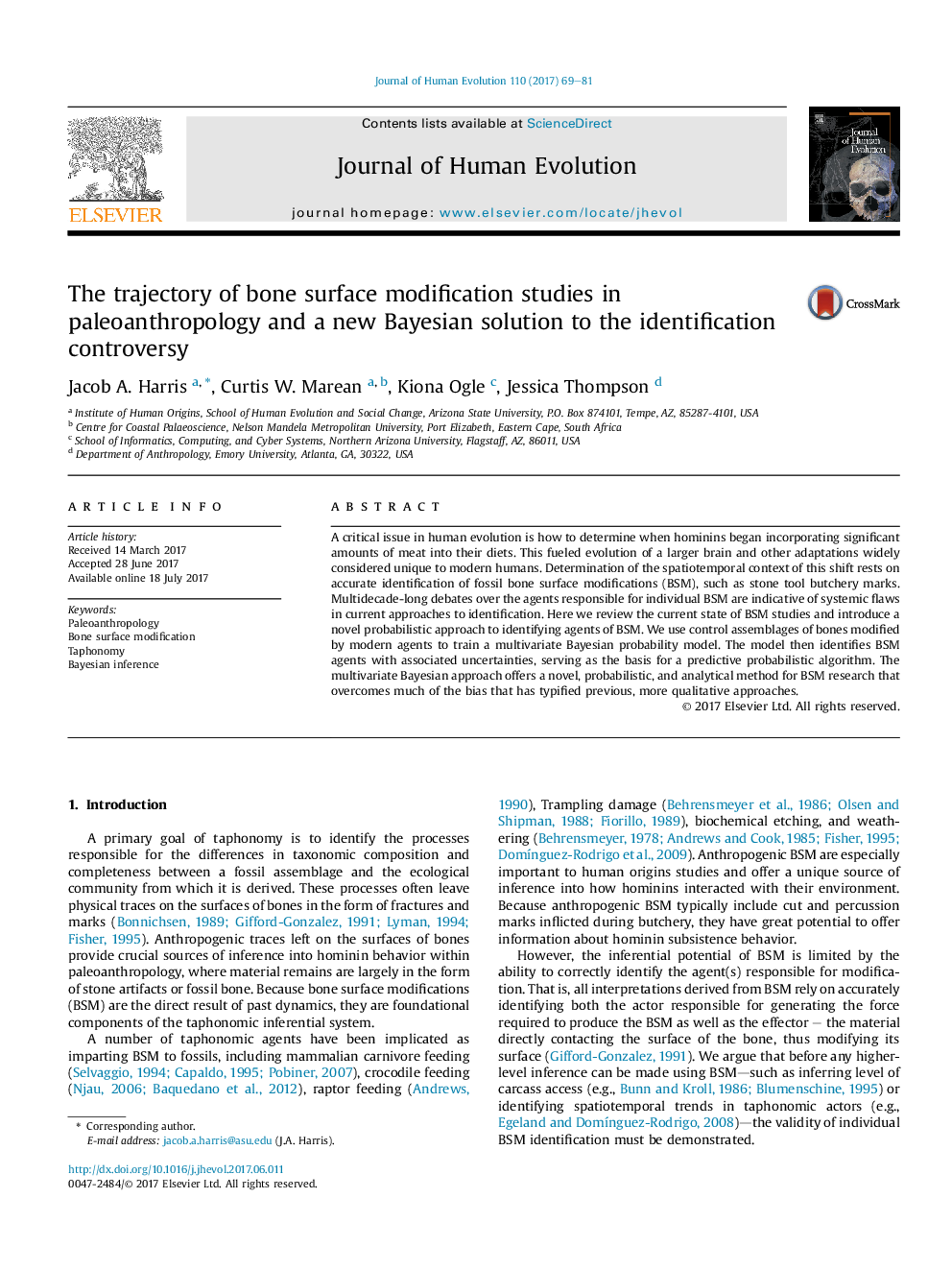| کد مقاله | کد نشریه | سال انتشار | مقاله انگلیسی | نسخه تمام متن |
|---|---|---|---|---|
| 5766868 | 1628139 | 2017 | 13 صفحه PDF | دانلود رایگان |
A critical issue in human evolution is how to determine when hominins began incorporating significant amounts of meat into their diets. This fueled evolution of a larger brain and other adaptations widely considered unique to modern humans. Determination of the spatiotemporal context of this shift rests on accurate identification of fossil bone surface modifications (BSM), such as stone tool butchery marks. Multidecade-long debates over the agents responsible for individual BSM are indicative of systemic flaws in current approaches to identification. Here we review the current state of BSM studies and introduce a novel probabilistic approach to identifying agents of BSM. We use control assemblages of bones modified by modern agents to train a multivariate Bayesian probability model. The model then identifies BSM agents with associated uncertainties, serving as the basis for a predictive probabilistic algorithm. The multivariate Bayesian approach offers a novel, probabilistic, and analytical method for BSM research that overcomes much of the bias that has typified previous, more qualitative approaches.
Journal: Journal of Human Evolution - Volume 110, September 2017, Pages 69-81
